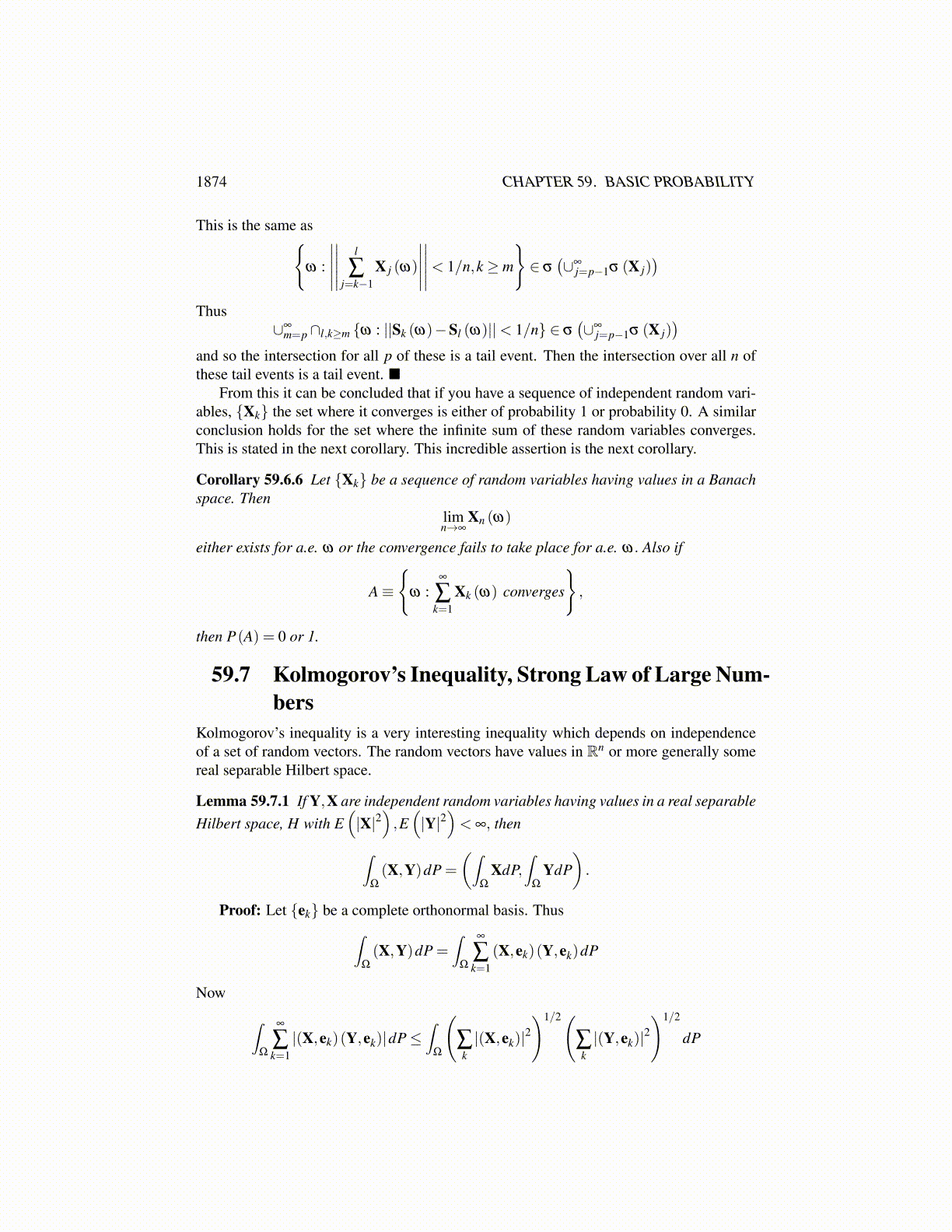
1874 CHAPTER 59. BASIC PROBABILITY
The Kolmogorov zero one law follows next. It has to do with something called a tailevent.
Definition 59.6.2 Let {Fn} be a sequence of σ algebras. Then Tn ≡ σ(∪∞
k=nFk)
wherethis means the smallest σ algebra which contains each Fk for k ≥ n. Then a tail event is aset which is in the σ algebra, T ≡∩∞
n=1 Tn.
As usual, (Ω,F ,P) is the underlying probability space such that all σ algebras arecontained in F .
Lemma 59.6.3 Suppose {Fn}∞
n=1 are independent σ algebras and suppose A is a tail eventand Aki ∈Fki , i = 1, · · · ,m are given sets. Then
P(Ak1 ∩·· ·∩Akm ∩A
)= P
(Ak1 ∩·· ·∩Akm
)P(A)
Proof: Let K be the π system consisting of finite intersections of the form
Bm1 ∩Bm2 ∩·· ·∩Bm j
where mi ∈Fki for ki > max{k1, · · · ,km} ≡ N. Thus σ (K ) = σ(∪∞
i=N+1Fi). Now let
G ≡{
B ∈ σ (K ) : P(Ak1 ∩·· ·∩Akm ∩B
)= P
(Ak1 ∩·· ·∩Akm
)P(B)
}Then clearly K ⊆ G . It is also true that G is closed with respect to complements andcountable disjoint unions. By the lemma on π systems, G = σ (K ) = σ
(∪∞
i=N+1Fi).
Since A is in σ(∪∞
i=N+1Fi)
due to the assumption that it is a tail event, it follows that
P(Ak1 ∩·· ·∩Akm ∩A
)= P
(Ak1 ∩·· ·∩Akm
)P(A)
Theorem 59.6.4 Suppose the σ algebras, {Fn}∞
n=1 are independent and suppose A is atail event. Then P(A) either equals 0 or 1.
Proof: Let A ∈T . I want to show that P(A) = P(A)2. Let K denote sets of the formAk1 ∩·· ·∩Akm for some m, Ak j ∈Fk j where each k j > n. Thus K is a π system and
σ (K ) = σ(∪∞
k=n+1Fk)≡Tn+1
LetG ≡
{B ∈Tn+1 ≡ σ
(∪∞
k=n+1Fk)
: P(A∩B) = P(A)P(B)}
Thus K ⊆ G because
P(Ak1 ∩·· ·∩Akm ∩A
)= P
(Ak1 ∩·· ·∩Akm
)P(A)
by Lemma 59.6.3. However, G is closed with respect to countable disjoint unions andcomplements. Here is why. If B ∈ G ,
P(A∩BC)+P(A∩B) = P(A)